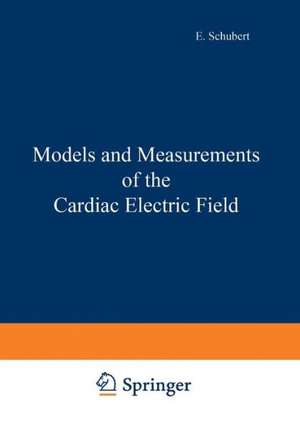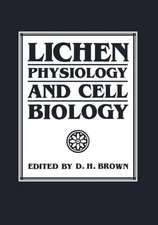Models and Measurements of the Cardiac Electric Field
Editat de E. Schuberten Limba Engleză Paperback – 17 mar 2012
Preț: 388.90 lei
Nou
Puncte Express: 583
Preț estimativ în valută:
74.42€ • 77.89$ • 61.94£
74.42€ • 77.89$ • 61.94£
Carte tipărită la comandă
Livrare economică 31 martie-14 aprilie
Preluare comenzi: 021 569.72.76
Specificații
ISBN-13: 9781468442465
ISBN-10: 1468442465
Pagini: 248
Ilustrații: X, 232 p.
Dimensiuni: 178 x 254 x 13 mm
Greutate: 0.44 kg
Ediția:Softcover reprint of the original 1st ed. 1982
Editura: Springer Us
Colecția Springer
Locul publicării:New York, NY, United States
ISBN-10: 1468442465
Pagini: 248
Ilustrații: X, 232 p.
Dimensiuni: 178 x 254 x 13 mm
Greutate: 0.44 kg
Ediția:Softcover reprint of the original 1st ed. 1982
Editura: Springer Us
Colecția Springer
Locul publicării:New York, NY, United States
Public țintă
ResearchCuprins
Introductory Review.- Electrocardiography and Magnetocardiography Today.- Mathematical and Physical Modelling of the Cardiac Electric Field.- Heuristical Algorithm for the Correct Solution of the Inverse Problem in Terms of the Model of a Closed Electrical Double Layer.- The Inverse Potential Problem Applied to the Human Case.- Computer Simulation of Cardiac Excitation.- About the Accuracy of the Method of Calculating Integral Characteristics of the Cardiac Electrical Generator.- An Attempt to Localize the Pre-Excitation Site in Wolff-Parkinson-White Patients by Means of a Mathematical Model.- Local-Integral Characteristics of the Cardiac Electrical Generator Based upon the Multipole Expansion of the Potential.- A Mathematical Model of the Equivalent Magnetic Cardiac Generator.- Factors Influencing the ST-Segment Mapping Evaluation (A Model Study).- Model Study of the Lead System Influence on the Image of the Physical Equivalent Generator.- Measurements in the Cardiac Electric Field.- Problems and Trends in Body Surface Mapping of Bioelectric Fields.- A System to Standardize and Analyse Surface Measurements for Model Fitting.- Tridimensional Distribution of Heart Potentials After Endocardial Stimulation.- Quantitative Evaluation of Body Surface Maps in Normal and Pathological Conditions.- A Comparison of Orthogonal Lead System Vectors Using Different Equivalent Dipole Generators.- Physiological Influences upon the Dynamics of Surface Maps During ST-T: Effects of Varied Heart Rate.- Problems of Comparative Electrocardiology Created by the Progress in Computer Mapping of the Cardioelectric Field.- The Electrical Resistivity of Lung Tissue Filled Either with Air or with Fluid.- Estimation of Cardiac Excitation on the Basis of Stimulus Response Functions and Epicardial Activation Isochrones.- Epicardial ST-Segment Mapping in Acute Myocardial Ischemia. Examples of Coincidental Experimental Interventions which may Affect Interpretation.- Natural History of Experimental Myocardial Ischemia. Observations in Acute and Chronic Studies.- Clinical Applications of Cardiac Electric Field Mapping.- Axis Concept in Body Surface Mapping.- On-Line ECG Mapping by a Small Microprocessor System.- Methods for Automatic Classification in Body Surface Mapping.- Exercise Electrocardiography and Monitoring of Myocardial Infarction with a Clinical Mapping System.- Surface Mapping Characteristics of Left Fascicular Blocks.- Spatial Velocity in the Second Part of QRS in the ECG of Rabbits.- List of Contributors.




















